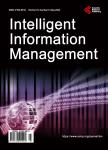Measuring Effectiveness of Health Program Intervention in the Field
Measuring Effectiveness of Health Program Intervention in the Field作者机构:Indian Institute of Health Management Research Jaipur India Suresh Gyan Vihar University Jaipur India
出 版 物:《Intelligent Information Management》 (智能信息管理(英文))
年 卷 期:2012年第4卷第5期
页 面:194-206页
学科分类:1002[医学-临床医学] 100214[医学-肿瘤学] 10[医学]
主 题:Effectiveness Efficacy Performance Evaluation Measuring Capacity Building of Health Interventions
摘 要:Improving and sustaining successful public health interventions relies increasingly on the ability to identify the key components of an intervention that are effective, to identify for whom the intervention is effective, and to identify under what conditions the intervention is effective. Bayesian probability an “advanced experimental design framework of methodology is used in the study to develop a systematic tool that can assist health care managers and field workers in measuring effectiveness of health program intervention and systematically assess the components of programs to be applied to design program improvements and to advocate for resources. The study focuses on essential management elements of the health system that must be in place to ensure the effectiveness of IMNCI intervention. Early experiences with IMNCI implemented led to greater awareness of the need to improve drug delivery, support for effective planning and management at all levels and address issues related to the organization of work at health facilities. The efficacy of IMNCI program from the experience of experts and specialists working in the state is 0.67 and probability of effective- ness of all management components in the study is 58%. Overall the standard assessment tool used predicts success of around 39% for the IMNCI intervention implemented in current situation in Rajasthan. Training management component carried the highest weight-age of 21% with 73% probability of being effective in the state. Human resource management has weight-age of 13% with 53% probability of being effective in current scenario. Monitoring and evaluation carried a weight-age of 11% with only 33% probability of being effective. Operational planning carried a weight-age of 9% with 100% probability of being effectively managed. Supply management carried a weight-age of 8% with zero probability of being effective in the current field scenario. In the study, each question that received low score identifies it



